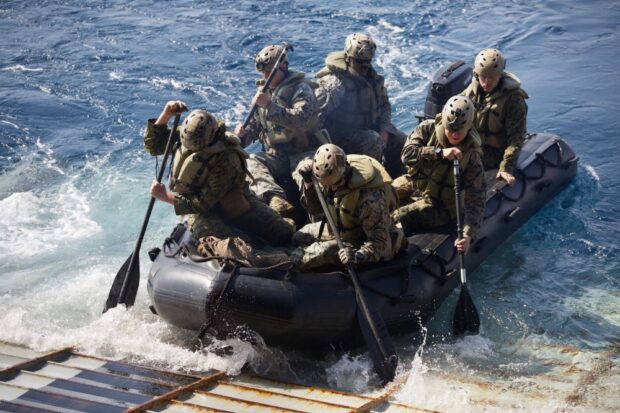Sentient Vision Systems’ Artificial Intelligence enabled ViDAR (Visual Detection and Ranging) sensor edge solution has completed a rigorous evaluation program for the US Marine Corps (USMC) centred on ground and test flights on Unmanned Aerial Systems (UAS).
Official confirmation of the successful Foreign Comparative Testing (FCT) project was made during the official visit of Australia’s Prime Minister Anthony Albanese to the United States who met with Sentient’s newly appointed CEO Mark Palmer at a reception in Washington DC.
The project objectives set by US Navy NAVAIR PMA 263 (Navy and Marine Corps Small Tactical Unmanned Aircraft Systems program office) in 2022, were to execute an FCT project evaluating Sentient’s ViDAR payload for USMC specific operations in wide area maritime environments. The success of the FCT project sees the team progress to enhanced application integration and operationalising the VIDAR payload with the USMC in the field. FCTs are one path to a Program of Record with the US DoD.
ViDAR, developed by Sentient in Melbourne, Australia, is the world’s first optical sensor enabled by AI and edge computing, to passively detect and identify objects in wide area motion imagery. ViDAR has been deployed in intelligence surveillance and reconnaissance (ISR) missions as well as search and rescue missions and is proven up to Sea State 6.
ViDAR’s integration is a validation on ViDAR’s low SWaP (size, weight, and power) form factor and broad operating envelope deployable on small, Group 2 UAS to provide unprecedented long-endurance imaging capability in contested environments all around the world.
“This milestone demonstrated the strength in our continued partnership to drive innovation in AI-enabled edge solutions. Learnings from real-time data further optimises detection and identification to enhance situational awareness. I believe Sentient’s pedigree in AI computer vision and deep learning, deployed on powerful yet lightweight modular systems, is the edge needed in successful ISR missions,”
explained Sentient’s CEO Mark Palmer who, together with Damien Tyrrell, Sentient’s Regional Director formed part of the top-level delegation during the DC visit.
“The team’s feedback on ViDAR’s performance was very positive and will help further develop procedures for crew coordination and surveillance strategies. Importantly, the work we are doing on the FCT is designed to be reusable on a range of UAVs, to maximise impact and make it easier for the troops in theatre,” reported Tyrrell.
The program started in October 2022 and the final flight evaluation was completed over four days. Flight testing trials have identified follow-on tasks to be accomplished by Sentient to progress the ViDAR payload towards a Program of Record.
With close to 4,500 systems deployed, Sentient’s AI-enabled sensor edge solutions for wide area motion imagery is proven for detection and identification in missions worldwide.
Source: Press Release

